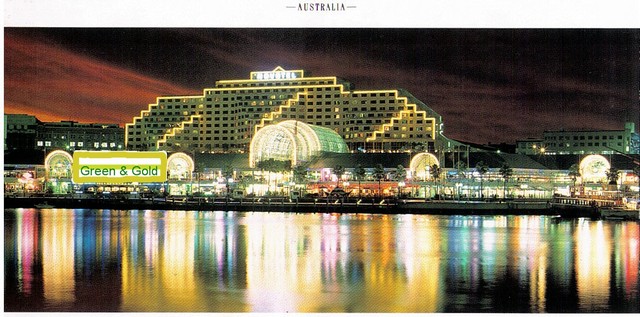
See My
Earlier Version of this Document.

Our Shops at Darling Harbour
Recommendation 1.1 (Para 1.50)
The Committee recommends that the Australian Competition and Consumer
Commission be proactive in promoting compliance with the proposed new
Unfair conduct provisions of the Trade Practices Act 1974.
Due to the ineffectiveness of the Australian Competition and Consumer
Commission in small business matters in the past, the Committee believes there
Is an urgent need to establish a body of precedents under the new provisions as quickly as possible.
Since 1997 I have been asking The Australian Competition and Consumer Commission to take my case according to the recommendations of the House of Representative.
I believe and have evidence that ACCC did not wish to take my case because they received an incentive of lower rent for their leased premises at Sky Gardens Shopping Centre in Sydney’s CBD.
The Honorable Peter Costello
I am announcing today that the Australian Government will amend the Trade Practices Act 1974 to introduce criminal penalties for serious cartel conduct. (Click the photo)
 The
competition watchdog considers hardcore cartel activity as a "serious
breach" of the Trade Practices Act. It views criminal sanctions
as one of the Dawson review's most important recommendations (Click
the photo) Mr.Graeme
Samuel Chairman (ACCC).
The
competition watchdog considers hardcore cartel activity as a "serious
breach" of the Trade Practices Act. It views criminal sanctions
as one of the Dawson review's most important recommendations (Click
the photo) Mr.Graeme
Samuel Chairman (ACCC).
Ctrl + Click the photos to follow links


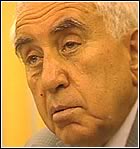
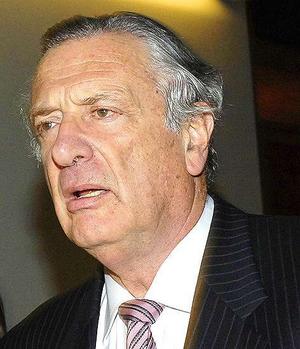
From Left to right:
1-Rodney Adler (my landlord) locked me out of my shop at 24 Market Street in order to silence me regarding “Arthur Andersen” firm who were involved in a $330,000,000 fraud.
2-Rene Rivkin kept my documents at his “Justice Corporation” firm at Double Bay for more than a year then refused to fund my litigation.
3-Harry Triguboff sold my apartments at Castlereagh Street in Sydney without my consent and shared the money with my corrupt solicitor Owen Ratner for his unjustified fee.
4-Marcus Einfeld corruptly caused my bankruptcy to retaliate re my complaint to ICAC and help his mates Adler and Wran

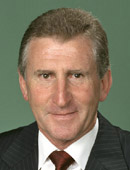


From left to right:
1-Trevor Kennedy was the chairman of Darling Harbour Authority who corruptly gave away three public lands to the Hayson Group of Companies.
2-Laurie Brereton was the minister responsible for Darling Harbour Authority who received $500,000 in donation from Hayson Group of Companies for favorite.
3-Neville Wran was the premier of NSW who got the cleaning contract (Alcorp cleaning Pty Ltd) from the Hayson Group of Companies in return for Favorite.
4-Bob Pentecost was the general manager of Darling Harbour Authority who gave away three public lands at Darling Harbour and later was employed by Haysons Group of Companies ( in terms of ICAC: Post Employment).

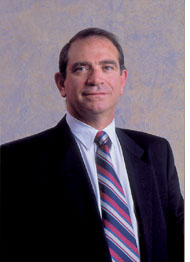


From Left to right:
1-Mark Watson (my solicitor) was involved in HIH scandal and later on became my opponent’s solicitor to act against me. (conflict of interest)
2-Paul Hayson (Solicitor) was the invisible man behind the scene at “Harris & Co” to deceit the court and cover up for the Hayson Group of Companies.
3-Owen Ratner (my solicitor) dumped me when he realized I had complained to ICAC in favor of his bigger client “Cabcharge Ltd” (Neville Wran’s company)
4-John Vouris (administrator of my company) who was at the same time liquidator of Hayson Group of companies; Juncrest Pty Ltd and Heycrest Pty Ltd (conflict of interest).
My Story
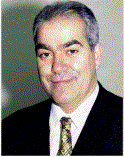
My name is Frank M. Nejad and was a director of a company called Sanirise Pty Ltd. Since1989. Our company leased and managed a total of 10 retailing shops from Hayson Group of Companies namely Merlin International Properties Limited (deregistered in Australia but Still registered in the United kingdom) and Merlin International Properties (Australia) Pty, Ltd(Liquidator Arthur Andersen) in the Darling Harbouside shopping center in Sydney’s CBD dealing in Australian made Souvenirs as well as an exclusive sportswear fashion gallery called Green & Gold Australia. This Shopping Center project was supposed to be a joint venture between the Wran government and the Hayson group of companies. The center opened in May 1988 by Her Majesty Queen Elizabeth as well as Thomas & Ian Hayson the directors and shareholders of more than 100 deregistered companies. The land of this center was leased to one of 200 companies of the Hayson Group of companies on a 99-year lease from the Darling Harbor Authority) to Darling Harbouside (Sydney) Pty Limited for a nominated $1 fee plus a small percentage of the income to the State Government of NSW. Darling Harbourside Pty Ltd has changed its name to ACN 002 928 476 Pty limited, which in turn is a trustee company for the Festival Market Place Unit Trust.
It began with the fit-out for this first shop, which proved incredibly expensive – this cost $200,000. This was because Merlin International Properties Limited demanded that it be of the highest standard. The Queen opened the center in 1988 with just 100 of the 200 shops occupied.
Major problems started almost immediately. The center was still being built so only half the shops were occupied. This meant there were also jackhammers going for much of day and access to the center was bad, too, with the result that very few customers came to the center. This was a real problem as rents were high. There was a brief respite when Haysons paid the then Neville Wran government a donation of $500,000 to Mr. Laurie Brereton in order to organize the tall ships to anchor right outside the shopping center and take part in the 1988 Bicentennial celebrations. As a result of this move a lot of people came to darling Harbor for a visit, business was good for a few days, and it also resulted in a number of the empty shops being leased, too. But, at this time, we (the tenants) also realized that construction of the shopping center was not complete and was not being operated and managed properly as promised by the Hayson Group of Companies.
No real effort was being made to complete it – there were no proper pavements, nor were there proper ceilings in the center, falling masonry, builder’s dust in the hamburgers, flying writs. In addition, the sewerage system was not operational for about four months, nor was the bridge to Darling Harbor operational. The result was we were getting hardly any customers. To help bring in custom Sanirise organized for tour operators to bring their tour buses to the center. We arranged some 30 tour guide buses to visit the center in 1991, but the tour guides were reluctant to bring tourists into the building as it was still unfinished and doing business was almost impossible, while this situation was continuing, the representatives of the Hayson group of Companies (we dealt with Seven of their companies in total) kept on encouraging us to stay and promised the good times would come and we all would benefit from this business.
This situation continued until 1994. The building was still unfinished and in desperate need of renovation, at this point the directors of Merlin International, Tom and Ian Hayson, decided to sell the shopping center to a Brisbane-based, Singaporean company called Werncog Pty Ltd. For $110 million.
This was when our problems as tenants really began. Werncog Pty Ltd wanted vacant possession of the shopping center in order to renovate it, but there were 100 tenants left. They got people to leave by a number of means. These included not renewing leases, even though (as was the case with myself) agreements might include an automatic option to renew. Other means of pressuring tenants included bullying; piling extra expenses onto tenants to the point where they could not afford to pay; threats and people being bashed-up. This happened to myself and to the chairman of our Retail Association (of which I was deputy chairman), Mr. Gordon Green, a man of 75. Mr. Green was beaten-up one night in Sussex Street, after which he gave in. He said that at 75 he was too old to fight.
I initiated the Retail Association of Darling Harbouside Shopping center and it was formed after we realized that tenants were being kicked out when their leases came up for renewal. A number of tenants lost their homes as a result. People were leaving in tears. For my own part, I had six shops in the building at this point, for which I was paying $360,000 a year in rent. I had recently been encouraged and mislead to take out a nine-year lease on a large upper floor shop on the understanding that when my other leases came up for renewal they would automatically be renewed. The term of the lease should have matched the most recent lease we had acquired both price wise and as well as length of the lease to the end of the year 2001. They called this a package deal.
Now, I, too, came under pressure. A number of tenants allowed themselves to be bought out and Haysons made us several offers, too. All of these were verbal offers put to us through our solicitors S.D.Ratner who in turn made us the offer on a white board in their office which was whipped out straight away after we refused to accept it; nothing was ever put in writing.
At this point we decided to turn to the media and contacted the Sydney Morning Herald, as well as ABC radio (John Thompson) which ran a story highlighting our plight. The story said tenants had lost their lifetime savings paying huge rents to the shopping center; rents, which were exorbitant, compared to other CBD rents. Tenants were having difficulty paying as the shops had little custom because the building was unfinished, access was bad – by now the Ibis and Novotel hotels were being built – and construction noise was atrocious.
Then it was our turn, on 5 May 1993, one of our five-year leases came up for renewal and the Haysons, (the directors of the management companies) refused to renew it despite a prior agreement that it would be renewed. This was part of the agreement made when we took on a large upper level shop. I contacted our lawyer Mr. Owen Ratner to fight this action and then our troubles really began in earnest. I encountered a series of ‘conflicts of interest’ involving various lawyers, which ended in my being bankrupted in 1999 by John Vouris the administrator of Sanirise who was supposed to have saved our company and continue to defend the case.
Misleading or deceptive conduct
As a company director of Sanirise Pty Ltd, I directed Owen Ratner and Co to take action against all the seven Companies that the Haysons were joint directors, namely Merlin International Limited as well as Merlin International Properties (Australia) Pty ltd, Merlin international Property Management Pty, Ltd, Hayson group of companies Pty, Ltd, Darling Harbouside (Sydney) Pty, Ltd, Heycrest Pty, Ltd as well as Hayson management Services Pty, Ltd.
On 21 May 1993 Ratner and Co-instituted proceedings in the Federal Court of Australia against Darling Harbouside Pty, Ltd under Trade Practices Act alleging on breaches of section 52 of the Trade Practices Act by Darling Harbourside (Sydney) Pty, Ltd. It also alleged breaches of certain terms of shop leases. Ratners negligently did not make all the Hayson’s Companies a party to this litigation.
Haysons would not renew the lease on our ‘mother’ shop as previously agreed with the developers. They argued that the company who made the deals with us was Merlin International Properties (Australia) Pty, Ltd, and they were in liquidation. I believe Owen Ratner was negligent in not making the other six companies a party to the litigation, Ratners also argued that the company they named, Darling Harbouside (Sydney) Pty Ltd, was the only one with money and assets. (Merlin international Properties (Australia) Pty, Ltd had gone into liquidation the previous year (1992) with liabilities of $328 million. Arthur Andersen was the liquidator of this company. All seven companies have as their directors and major shareholders Tom and Ian Hayson.
Ratners did not ask the court for a ‘mareava’ injunction either. I have since discovered that this is standard practice in such cases and would have meant that the rents payable (amounting to $60,000 a month) would have paid to the court rather than the Landlord, which would have put pressure on the respondent to settle quickly. Instead, the case dragged on for more than 18 months.
Relief against forfeiture of lease
In an action in which any party to the action seeks relief against forfeiture of a lease, the party seeking the relief is not to be required, as a term of relief against forfeiture, to pay rent for the recovery of which, by reason of the expiration of a limitation period fixed by or under this Act, an action would not be maintainable if brought on the date on which the first mentioned action is brought.
In 1995 the Federal court ordered Sanirise to pay a security of $100,000 to the court in order to hear the case. This had the effect of stifling litigation. At no stage did Ratners inform the court that the Respondent’s six associated companies had gone into liquidation.
In addition to this, Ratners suggested to me that I give up the ‘mother’ shop and take two larger shops at the back of the upper level of the shopping center instead as a way of settling the case. I viewed this as the beginning of being pressured to move out as the ‘mother’ shop was in a strategic position near the main entry to the shopping center by the Convention Center. It acted to funnel customers through to my other shops. Tour guides would bring customers to this shop first, as it is also near the tour bus stop.
I later discovered that Ratners biggest client Cabcharge Pty Ltd had an association with Alcorp Cleaning, a company which had the cleaning contract for the Harbouside Shopping Center and Neville Wran and Malcolm Turnbull were the beneficiaries.
At this point we took on a new solicitor by the name of Paul Bard (Bruce and Stewart Turton) as they said they had acted against the same people for someone by the name of Ian Yates. But, as they demanded $400,000 in advance to act for us, which at this stage the company could not afford, we decided not to take them on and, instead, took on another solicitor, Mark Watson.
Mark Watson (Solicitor) advised us to appoint an administrator to our company, Sanirise, was just about to become insolvent. This was the direct result of all the costs and time demands of the litigation. At this time we had ten shops – six at the Harbouside Shopping Center and four in the CBD. This debacle totally destroyed our business.
On Mark Watson’s recommendation I appointed John Vouris to “handle the big Cartel”, as Watson put it. Strangely, we had to attend Vouris’s office at 1am to sign these documents. I asked Vouris directly at this point if he knew of Tom and Ian Hayson or of any of the companies they were associated with. He assured me he did not so there was no conflict of interest. I subsequently discovered this to be untrue as I undertook an ASIC search and this revealed that Vouris had acted as liquidator for two of the Hayson companies – Haycrest Pty Ltd and Junecrest Pty Ltd the previous year. I later questioned him with this, saying, “You told me you did not know the Haysons!”
I believe this constitutes a conflict of interest, especially as Vouris had denied any knowledge of the Haysons, who were the directors of the seven companies that managed the Harbouside Shopping Center and from all of which bills and correspondence was variously issued.
Vouris at this point put $1.25 million of our stock up for auction without our knowledge or the committee of creditor’s consent. This included prime ‘green and gold’ Olympic goods stored in 24 Market Street Sydney. I only discovered the sale when I looked at the Sydney Morning Herald auction section. I was able to obtain an injunction to stop the sale, but only temporarily, as by this time I was reduced to acting for myself, as my solicitor, Mark Watson, was acting for Vouris! This was another clear conflict of interest. Our stock was sold for a mere $100,000 so, (I believe), Vouris could secure his $110,000 fee.
A few months later I made a complaint to the Law Society of New South Wales and they dragged the matter on and on for 18 months with no proper investigation, the cartel was too big and they had no choice but to cover up for their Legal Eagles, by that time we were so exhausted that we decided to give up on them.
Conclusion
I believe that the events I have outlined and the effects they have had on me and on my family merit a royal commission of Inquiry into this matter. I believe I have been the victim of corrupt and Cartel behavior and unconscionable conduct practice that has destroyed our business, especially what Marcus Einfeld did in this case.
In addition to the above, I have also observed employees of the Darling Harbor Authority, which originally granted the Haysons its 99-year lease moved over to work for Haysons. Bob Pentecost, the former general manager of the Darling Harbor Authority, whose name appears on the 99 years leasehold documents, went to work for Merlin International properties (Australia) Pty, Ltd as did the former acting general manager, John Starkey. Under the rules of ICAC governing post-separation employment of public servants, moving onto such employment is considered corrupt.
In my opinion the above, along with the attached ‘chronology of events’, constitutes enough evidence to merit a parliamentary inquiry into the activities involving Marcus Einfeld, Rodney Adler, and the Darling Harbor Authority. I believe they are guilty of cartel behavior designed to exploit small businesses. The result has been that my family business has been destroyed, as have the businesses of numerous others with dire effects on dozens of families.
ADDENDUM
Chronology of events
1. The Darling Harbor Authority is formed by the Neville Wran Government and three public lands are given over to Merlin International Property Ltd, a UK public company registered in the Isle of Man, also registered with Australian Stock Exchange. Its main directors and shareholders are Thomas Hayson and Ian Hayson (father and son). Despite having neither financial experience nor experience of building or managing a shopping center, they are granted a 99-year lease for a nominal $1 each, plus a very small percentage of turnover from the shopping Center. This is done without proper procedure or tender process. The terms of the lease are also extremely lenient. For example, there is no liquidation clause in the 99-year lease.
2. Merlin International advertises a ‘new generation shopping center’ that successful US shopping center developer James Ruse is going to manage with the support of the Darling Harbor Authority. Fancy brochures are printed and lavish parties thrown at the Hilton hotel to attract potential tenants. Videos of a very busy shopping center in Baltimore, US are shown. There is talk of a joint venture between the NSW Government and the Hayson family, and also talk about the Sydney Casino being built at Darling Harbor. This does not happen for ten years.
1. The Hayson family arranges finance to build the shopping center from Custom Credit Finance and in May 1988 the Queen opened it. It is unfinished and half-empty, contrary to claims that all shops are fully leased.
2. Sanirise Pty Ltd leased six of the shops and set up three souvenirs shops, as well as a tie shop, a money exchange services shop and a leather shop. They owned four similar shops in the CBD. (One of these is rented from FAI Leasing Pty Ltd). During the course of dealings with the Haysons, Sanirise deals with seven different companies, all of which have the same two directors and shareholders, Tom Hayson and Ian Hayson. These are:
Merlin International Properties Ltd registered in the Isle of Man (deregistered).
Merlin International Properties (Australia) Pty Ltd (deregistered).
Merlin International Property Management Pty, Ltd (deregistered).
Hayson Management Services (deregistered).
Haycrest Pty Ltd (deregistered). Liquidated by John Vouris.
Junecrest Pty Ltd (deregistered). Liquidated by John Vouris.
Darling Harbouside (Sydney) Pty Ltd (name changed).
Sanirise paid bond and rent monies to Merlin International Property Management Pty Ltd, as well as to other companies nominated by Haysons, but all officers are from one of these companies which Owen Ratner negligently and fraudulently failed to make a party
To this litigation
1. Merlin International Properties (Australia) Pty Ltd goes into liquidation with $328 million in liabilities and nil assets. Supreme Court of NSW appoints Arthur Andersen as liquidator, who reports to the Australian Securities Commission that the company was still trading while insolvent and that a number of corporate offences have been committed. ASC recommends further investigation.
2. Merlin International Property Management goes into liquidation. Supreme Court of NSW appoints Howarth and Howarth as liquidators.
3. Haycrest Pty Ltd goes into voluntary liquidation. John Vouris appointed liquidator.
4. Junecrest Pty Ltd goes into voluntary liquidation. John Vouris again appointed liquidator.
5. UK fraud squad investigates Merlin International Ltd and finds financial irregularities regarding collection of rents and income of the shopping center. Directors (Hayson family) had claimed the shopping center was losing money, therefore, had to be sold. Subsequently, they had bought the shopping center themselves for less than a quarter of its value, eventually selling it for $110 million, (having bought it for $25 million). Disgruntled UK shareholders, who have lost a tremendous amount of money, are not aware of this and why the company was losing so much money. The Haysons had set up such a complex corporate network of companies that the Isle of Man fraud squad could not work out exactly what had happened.
The transaction involving the sale of shopping center would have required the approval of Darling Harbor Authority and the change of ownership should have been registered with the Land Titles office. None of this appears to have been done. During this time – 1988 to 1993 – the center’s tenants find it very difficult to operate because the building is unfinished and there is the constant sound of jackhammers and building work. Management standards are also extremely low and the number of visitors to the center is correspondingly low. Would-be buyers of the center demand as close to vacant possession as possible, so they can fully refurbish the center. (This subsequently happened). Some tenants, finding it impossible to pay the exorbitant rents being charged, left the center of their own free will, but some were bullied or threatened and a number resorted to legal action.
1. Tenants Association of Darling Harbor is formed to help deal with the enormous problems associated with the shopping center. Frank Nejad, the largest tenant, is elected deputy chairman and Gordon Green elected chairman by secret ballot to represent the tenants in negotiations. Haysons does not recognize the association and tries to destroy it – quite successfully.
2. Sanirise, which had renegotiated its leases in 1992, receives assurances in writing from Merlin International Pty Ltd that all leases will be a package deal and when they come up for renewal and will be matched with the latest lease. This means the five other leases will have the same terms and conditions as the latest (nine-year), which operates until the end of 2002. However, Haysons, then refuses to renew the lease on the ‘mother’ shop when it comes up for renewal on the basis that Merlin International properties (Australia) Pty, Ltd (now defunct) had entered into the agreement and not Darling Harbouside Pty Ltd. Sanirise directs its solicitors, S.D. Ratner & Co, to take action against the Haysons.
3. S.D. Ratner & Co undertakes action in the Federal Court under the Trade Practices Act, but negligently fails to make all seven companies a party to the litigation on the basis that the only company with money and assets is Darling Harbourside Pty Ltd In addition, S.D. Ratner also fails to request a mareava injunction, so the court orders Sanirise to pay the full rent until the case is heard – For 18 months we had to deposit $60,000 per calendar month into Federal Court of Australia which was handed to a wrong company corruptly.
For the next 18 months while losing money in what was a ‘ghost-town’ like shopping center and ended up going into the red. S.D. Ratner & Co was repeatedly requested to inform the court about the other liquidated companies but refuses to do because it was against the will of their favorite and more powerful client Cabcharge Pty Ltd with Mr. Neville Wran as director of that company.
The Australian Federal Court orders Sanirise to post security of $100,000 upon application by the wrong party. This has the effect of stifling the litigation. At no time is the court informed that the respondent’s sister companies have gone into liquidation. In addition, Darling Harbouside Pty Ltd is using the tenants’ promotion and marketing fund to litigate against them. This, too, is never brought to the attention of the court.
4. In addition to the above, S.D. Ratner did not undertake any ‘discovery of documents’ regarding any of the companies concerned. They hoped to settle the case quickly, for a quick buck and proposed an unacceptable solution.
5. Sanirise changes solicitors to Paul Bard believing he had previously acted for Ian Yates against the Haysons and the Darling Harbor Authority. However, they demanded $400,000 in advance to act for us, it was too expensive and we could not afford it another solicitor, Paul Bard exercised a lien over our documents for a little bit work he had done and we never saw the documents again.
Mark Watson was the next solicitor we met, his advised us to voluntarily appoint John Vouris as administrator of our company. I asked Vouris if he knows of Tom or Ian Hayson and if there was any conflict of interest. I was told ‘no’ to both questions then subsequently discovered, through an ASC search, that Vouris was at the same time the voluntary liquidator of two of the companies of which the Haysons were directors. There was a clear conflict of interest in the administrator of Sanirise also having acted as liquidator of Hayson’s other companies. Vouris then later auctioned our stock without our consent, or the approval of the creditors, for a fraction of its worth, auctioning $1.25 million worth of goods for less than $100,000 in order to secure his $110,000 fee before paying the $4000 rent to Rodney Adler for our last remaining shop at 24 Market Street, Sydney.
We offered rent to Rodney Adler from our own money but he refused to take it and locked us out of our shop and employed bouncers to keep us out.
Arthur Andersen (the accountant firm) was the auditors of FAI leasing and Adler wanted to silence us.
The Case was stifled as a result of the wrong orders by Marcus Einfeld and associates, it was never heard.